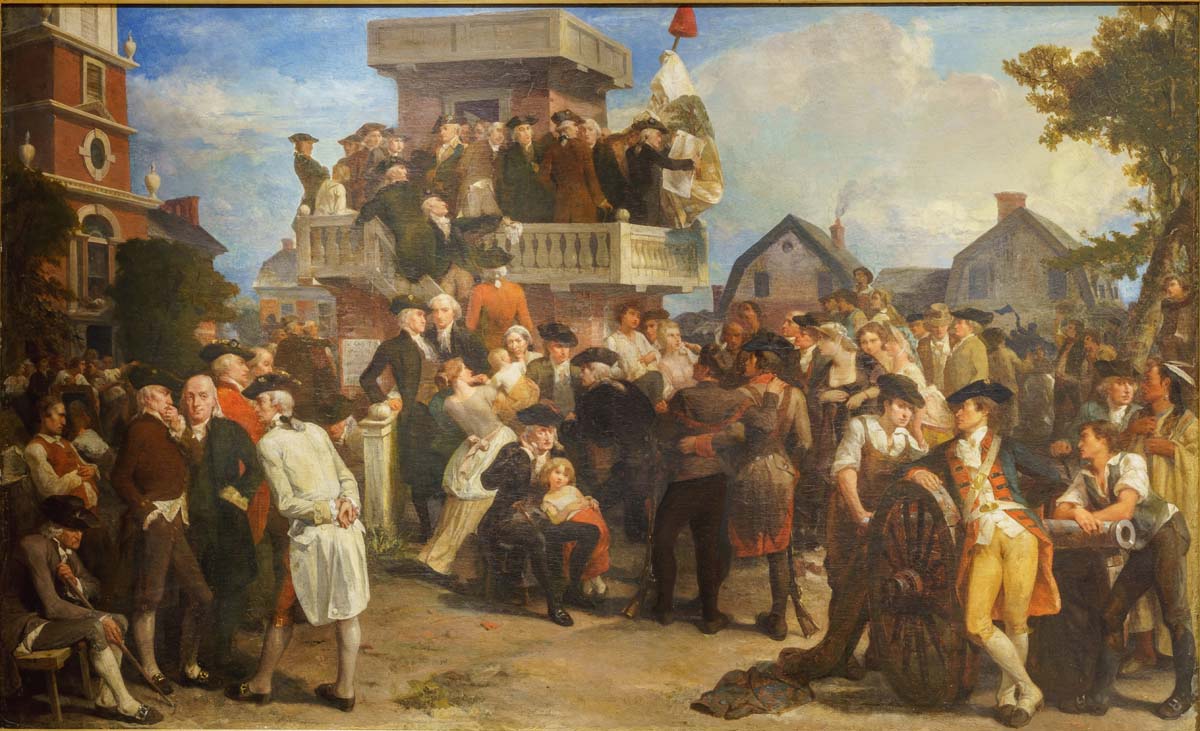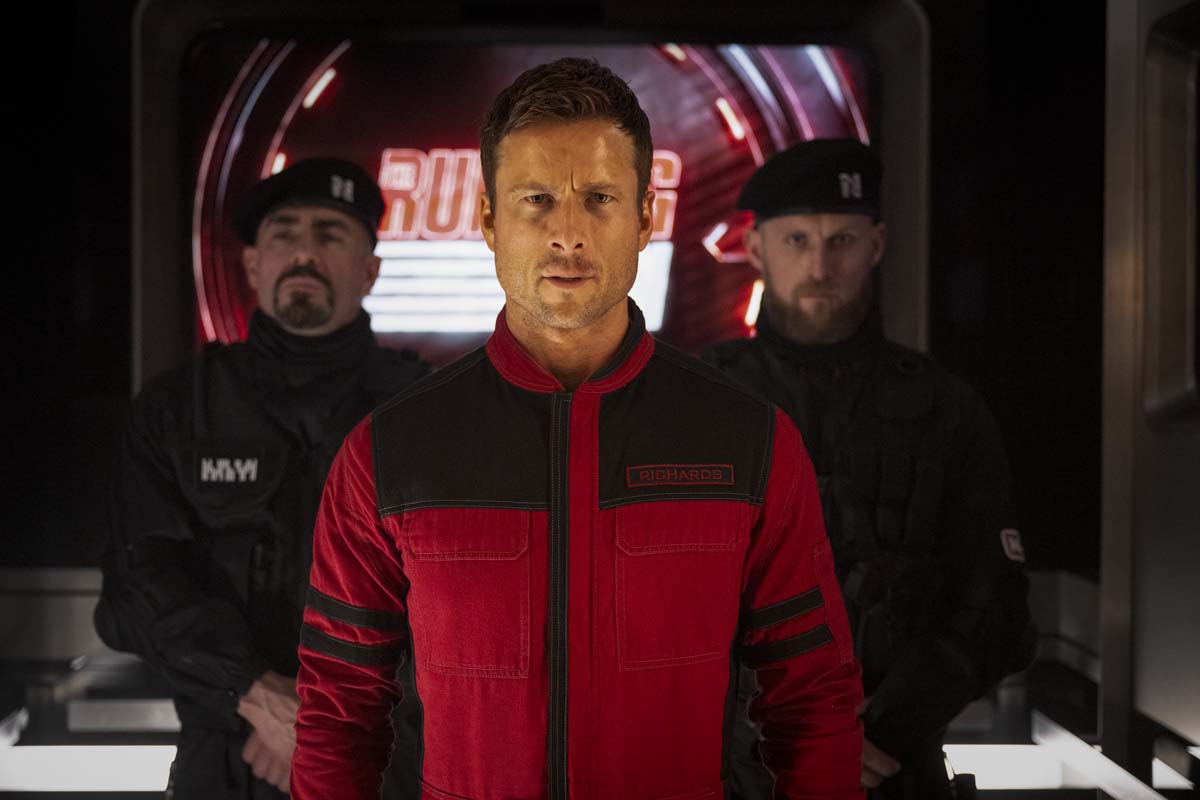Nosferatu
Editor Louise Ford, ACE discusses - among other things - the importance of sound design in horror films including the revelation of her personal secret sauce…her method to maintain emotional continuity and how she deals with the dark themes of her work with Eggers.
Today on Art of the Cut, we speak with Louise Ford, ACE about editing Robert Eggers’ Nosferatu.
Louise has been on Art of the Cut before when we discussed Eggers’ The Northman.
Her other credits include the features Wildlife, Bad Education, and The Lighthouse, among many others.
Louise, it’s so nice to have you on Art of the Cut. We last spoke for The Northman, I think.
Yep. That’s right. Yeah. Couple of years ago.
You’ve worked with Eggers before on several films - and maybe all of his films as director - is that correct?
Yeah.
How has your collaboration developed over the course of your time together?
Rob and I connected first in 2007, so we’ve been working together almost 20 years. The first thing was the short film The Tell-Tale Heart, and we just hit it off straight away. We have similar interests, aesthetics, all that stuff. He’s one of my best mates, if you want to call it that. He shares stuff with me while he’s working on a script. He’ll tell me when he has an idea before he starts writing a script. We discussed Nosferatu in the edit room for The Northman, for example, so I’m kind of involved very early on. He sends me drafts of scripts. I give him notes. He uses the ones that he thinks he wants to use and we go forward like that. So it starts with the script.
What happens an awful lot is I’ll be an art gallery or a museum, and I might see something and I’ll text him a picture of it, like I remember I saw an engraving of a castle when I was in the British Museum on The Northman, and he was talking about Nosferatu. He’ll send me the look book. I know what he’s going to like. It’s great to be on so early in the project because you then feel very close to it, which could be seen - I suppose - as a disadvantage. There’s something to be said for coming in cold because you can view it more objectively. They’re both good approaches. Some editors say they never visit the set. I think it was Murch would famously said the he never wants to be on set because he doesn’t want to know how much effort and work went into getting a shot because it might influence whether he cuts it out. But I guess I don’t have any qualms about cutting anything out. What can I say? It’s just part of the process. That’s just the way it is. I’m not saying I’m cavalier. To be involved from the script stage just gives you a sense of ownership of the project if a director is willing to share that stuff with you right from the beginning.
On The Northman, Rob and [cinematographer] Jarin [Blaschke] were in pre-production and they’d send me the storyboards, asking for input about “How is it going to work in the edit?” That’s very generous of Jarin. Jarin and I both started with Rob in 2007, So we’re all mates at this point. It’s trusting in your collaborators. I think Robert puts great store in that. He uses the same collaborators - his department heads - time after time. Jarin and I started on The Tell-Tale heart in 2007. Then when we shot The Witch in 2014. Craig Lathrop - the production designer - came on. Linda Muir - the costume designer - came on. They’ve both become part of the gang. Then on The Lighthouse Garrett Bird was Rob’s assistant and he stepped up to be a associate producer. Robert sets great store in loyalty, so he takes the same crew with him from projects. Obviously, you have to be good at your job. He’s very intent on making the best film we possibly can, so he obviously wants his collaborators to be top notch. He’s very good at selecting people who help him achieve his vision. You see that in the cast as well. It’s a collaborative art form. The cast he has put together for Nosferatu, I think really is special.
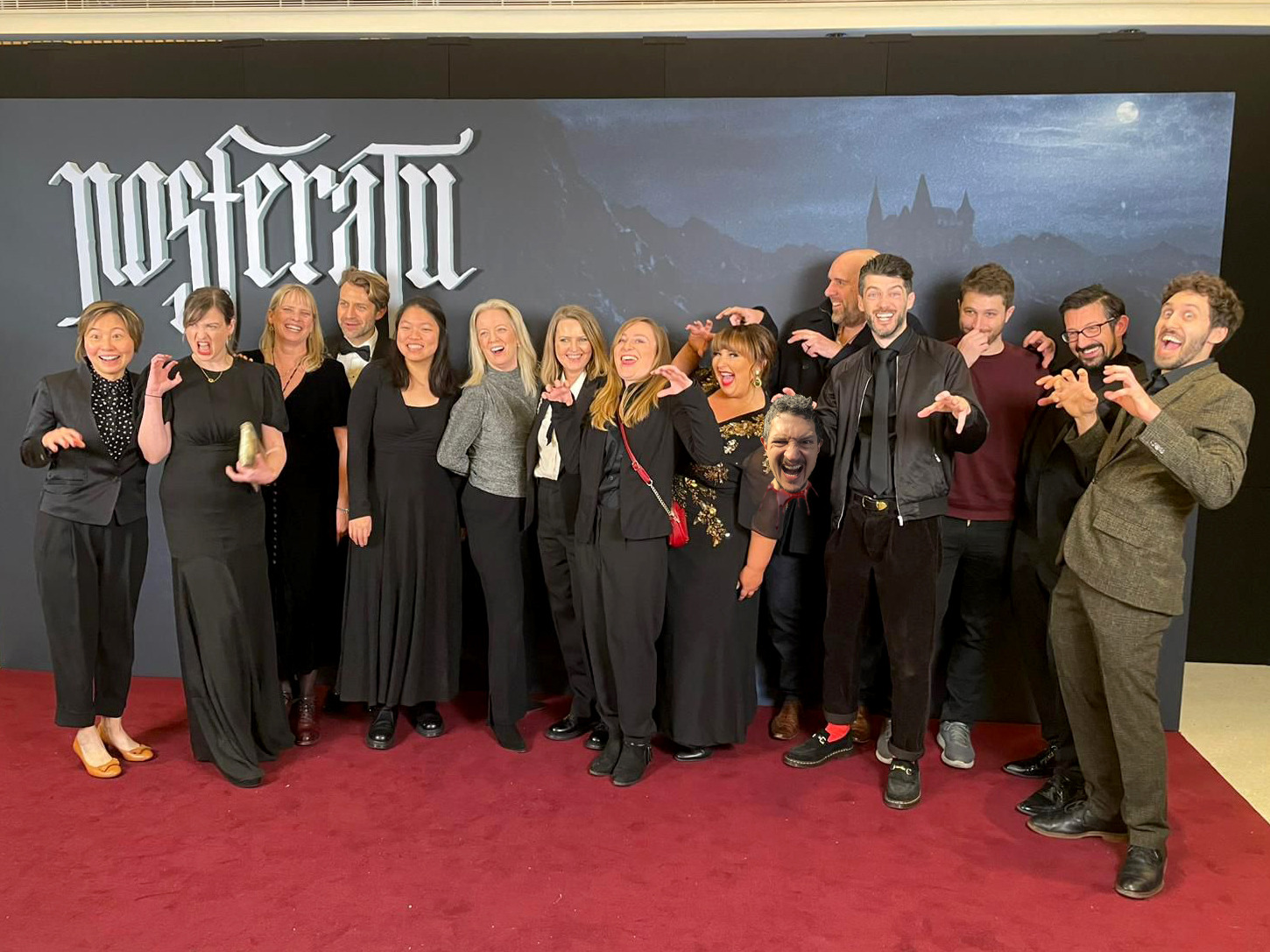
The post team at the premiere. Louise Ford, ACE, in the middle in the white shirt.
It may be a testament to Eggers’ directing or to your editing, but it felt like there wasn’t a lot of coverage in many scenes. Were most of the scenes covered traditionally or were there are a lot of oners?
We all know that he doesn’t do traditional coverage. Some scenes did have coverage, but he pretty much knows what he wants to see on screen at any one time. He gives me what I need to cut it. Of course, the same old challenge comes up again and again with these long oners. The reason he uses them is because they are immersive. They immerse you in the story. Every time you make a cut, that is a break. Although we as an audience - if you’re a good editor - shouldn’t detect that, but whether you like it or not, there’s something about staying in a shot, being able to do a lot in one shot that just pulls you in. So I understand why he does that, and is very successful at that, but as an editor the challenge is always the pacing of the film, not only within the scene itself, but what impact that has on the whole movie.
You put the first assembly together and it’s only really when you sit down and watch that the first time that you get a sense of, “I can see it slow in this part” or “This part happens at the wrong time” so we need to rearrange some scenes. We need to lose some scenes. We need to cut some scenes even with movies that are traditionally covered. Jarin and Rob spend a lot of time setting up the shot - probably far more than a traditional director. With a different approach, you need a lot of coverage. You wouldn’t spend as much time choreographing the camera. That’s really what it comes down to: blocking the camera. I was about to say in relation to the actors, but that’s not what it is at all. They block the camera and then the actors have to adapt to what the camera’s doing, which is actually the opposite of what most directors like to do.
I suppose you can’t really tackle the pacing issue of the movie until it’s been put together in the assembly and you can watch it down. That’s when you tackle that. But when I’m getting the scenes in on a daily basis - when they’re shooting it - there are sequences which on paper or on the storyboard were amazing but when I get it in the edit, I can feel instantly like I’m bored. I’m bored of looking at that black wall while the camera is moving along it. An example in Nosferatu is the morning after Thomas Hutter is first being attacked by the fireplace and he wakes up in the grand hall and he comes out into the corridor. He’s disoriented. He doesn’t know where he is. He’s lost in this big castle. He walks down the corridor towards us. The camera then pans to the left and lands on a long corridor in front of you, with a door sort of open at the end. Tthe bit in the middle where the camera sort of pans across was probably four times as long as than it was in the finished movie. It was sort of conceived as a time cut, but tt didn’t play like time was going by. So in the cutting room we decided, “Let’s just make it so that he comes down one corridor, the camera goes past a bit of wall and he’s in the next corridor. We took a massive great big chunk out and visual effects made sure it looked right. So that’s an example of how you can manipulate these oners if you need to make it shorter. The other great trick of course, is a good old Avid Timewarp which I use - Trim to Fill - a huge amount. You have to use your tools, right? If you have no other way of changing the pacing, you’ve got to do something. I don’t know why it feels like that cheating or something.
Everybody likes to believe cinematography dictates sometimes how long the shots are. But we know - as editors - that that’s not always the case. It goes without saying Jarin’s work is sublime. One of the thrills of working on Robert Eggers’ movies is getting those dailies every day. You’re just blown away by how just beautiful this footage is.
And the actors are very beautiful. The costumes! Linda Muir’s costumes are just stunning. Then you have Craig Lathrop. His production design on this was just to me on another level, off the hook. Those castle interiors - the great hall he built - that’s not real! I think there were 60 sets on this film.
You were talking about how the cinematography is fantastic, but sometimes we need to work on the pacing a little bit. I always consider that they don’t have the context. They’re not seeing the things in time next to each other, and therefore they can’t judge those things. The only person who can is the editor, because you’re getting that opportunity that that they were not afforded.
Exactly. And nobody could. In a sense, each scene is sort of a beautiful object in and of itself, and it’s perfect. And everything within that scene happens at the right pace most of the time - apart from the example that I was talking about - but most of the time they’re conceived as this one beautiful object. Then you put all the beautiful objects together in the edit room and it’s an ugly, mis-shapen object. So you have to sort of go in and reshape it so that the whole thing becomes a beautiful object.
Paul Hirsch gave me a great quote about that, which was about food. You can have this wonderful ten course meal, and every single course is spectacular, but you can’t eat the whole meal.
That’s perfect. That’s a great analogy. That’s a much better analogy than mine.
You can steal that. Did the two of you discuss the pace of the edit before you started working? Did he talk to you about his vision?
You know, it starts on the page, doesn’t it? You can read it in the script. That’s really the first time you experience in the movie. When I read the script, you’re reading in real time. A page a minute is what they say for screen time. It’s a process from that to the end of picture lock. Robert’s dialog is beautiful. A lot of the process is refining the pacing. I can give you an example. The scene in when Thomas Hutter has dinner in the Grand Hall with Count Orlok the first night and he cuts his finger, but there’s a conversation before that that we had to cut. It’s really painful to cut Robert’s dialogue because it’s all really interesting. In that instance, you’ve got to do it for the good of the movie. That scene was so much fun already. Nick plays terrified so brilliantly, and of course, Bill’s voice is terrifying in the edit room. I love working on Robert’s films because it’s sort of a gleeful and there’s always an element of humor. We - the audience - know the story. We sort of know what’s going to happen, so you’re sharing his fear. I don’t know why that’s comical to me, but Robert and I were both giggling away when we’re saw it.
Do you find you need to protect yourself or escape from the darkness when you’re working on a film like this, or do you just find humor at it, like you just said?
I’ve always been interested in all this stuff. I think it’s a way of dealing with - if you want to get deep about it for a minute - it’s a way of being able to sublimate what is going on in the outside world. What’s going on in reality right now is far more horrific than anything you can put on screen. So the ability to be able to experience your own fears in a safe environment - like a movie - helps. Ultimately at one level, you know it’s not real, but that allows you to sort of exorcize whatever your personal fears are: the environment, war, starvation, poverty. I’m just talking about global things. But even in your own life, we all have stuff to deal with, and I find it cathartic and it doesn’t worry me. I don’t have nightmares or anything like that. It’s a way of dealing with your own darkness. I think we all know what those fears are.
If I was an actor, I think that would be more of a threat. What Lily-Rose [Depp] does in this movie and to inhabit those kind of characters is very tough, I think, if you’re doing it right, it’s very tough on a person and I’m sure they have their own individual mechanisms to deal with that. I’m sure they both have their methods.
Something that I always find sort of impressive really is Lily-Rose Depp’s accent. I’m British. I’m listening to her accent and it’s flawless. She also raised the register of her voice to play this part. So she might have a line where she says, “The honeymoon was yet too short.” Then they yell “cut” and then she’s back to - I can’t do an American accent - but then she’s Lily. She says, “Okay, I’m ready to go again.” She snaps in and out of it that quickly and successfully. It’s astonishing. I think her performance in this film is astonishing for me. Especially the scene at the beginning of the movie where her fiancé is saying he’s leaving and she says, “You can’t go.” Then she tells him her horrific dream. She’s at her own wedding with the clouds overhead, and she’s at the altar and she turns around and all the guests are dead, including her father. Then she turns and it’s not Thomas. When she’s recounting that we’re in sort of a close-up. She’s in profile in the close-up. Nick is in the background listening to her story. The play of emotions on her face goes from happy, sad, elated, horrified, devastated, ecstatic again, while she’s telling each beat of that story she’s able to do make it feel authentic. Make it feel like she is actually seeing these images in front of her eyes while she’s speaking. That dialogue! That was a scene they shot quite early on and instantly I knew, “she’s nailed it. It’s going to be brilliant.”
And of course you can’t possibly cut in the middle of a performance like that.
No, but you can but you can audio replace words if the intonation wasn’t exactly what we needed at that particular moment.
With scenes where you do have a little bit more coverage, what is your approach to a typical editing scene Do you do selects reels and did you have to change your usual method for this film?
No, I use the same method every time. I ScriptSync everything. Actually that’s the second stage. The first stage is that I screen the dailies and make notes about which takes I like. I’ve watched all the dailies in a more traditionally shot scene with coverage. Then, do you start in a close up? Do you start in a wide? I just feel my way through it. I emotionally feel where I want to be at a certain time - whether I want to be in a wide shot or a close-up or should I be on this person talking or this person listening? It’s really instinctive in terms of whether I do a selects reel. Sometimes it depends how complex the scene is. If it was a multi-cam action scene I definitely go through each those shots and make a sequence with selects.
For just action I would definitely make selects for that. But if it’s a dialogue scene, I’ve watched my dailies, I’ve made my notes. I know which bits of which takes I really like. If I’m in a conversation between two people in close-up - like the dinner scene in Nosferatu when Hunter first gets to the castle - I tend to want to stay in it. If I’m going to go back and forth between two characters talking, if I can choose one take I feel like the emotional journey that character goes on will be more consistent within one take than if I’m splitting between two. That’s not always possible because there will be some acting piece that’s so good in another take that you want to use, but then the rest of the take’s no good, but that’s when ScriptSync comes in. If I get to that back and forth part of the scene, I’ve started the scene maybe in a wide then I’m sort of into the back-and-forth with two characters, I kind just build it from from the takes. I start slapping stuff into the timeline straight away.
You’re using ScriptSync as your bin, kind of?
Yeah, exactly. That’s a really good way of putting it. The reason that I go to ScriptSync is if I’ve decided take four is the one I really want to stay in because visually his acting is brilliant, but there’s two lines that I want to replace, so I go through ScriptSync just to check. Is that the best reading for that line of dialogue? Actually now you’ve made me think about it, it’s kind of a two step process because the picture is one half of it and the dialogue is the half of it. I do a lot of dialogue replacement in Robert’s films. A lot! A lot of times the line you’re hearing was not from the take that you’re seeing. That’s why I use ScriptSync because I want to hear every line reading for each line to make sure that it’s conveying the right emotion. I’ll block it out from beginning to end. Sometimes I get halfway through and I think, “I don’t like the direction this is going in. I was on the wide shot. I was on the medium for that. So I’ll copy what I have done.
I’m working in Avid but I probably do this because I learned on Final Cut 7 where the project size was a factor. You couldn’t go above 100MB and sequences take up so much memory. I started cutting on the left hand side, putting the scene together. I get three-quarters of the way and decide I like the beginning, but I don’t like the last few edits I’ve done here. I’m not feeling it, so I’ll copy that little piece of sequence I’ve put together and drop it to the right-hand side of where that one ended. Then I’ll make the change I want to make, then I’m think, “Well, that’s pretty good. Maybe I want to try a different take in that middle section.” So I copy that. Basically I end up with sequences that will have like maybe five, 6 or 7 different versions because you want to be able to go back and say, “Actually, that first thought was right. It was better to go to the close-up at that point.”
When I get to the point where I’m happy with the scene, the sequence becomes Scene 63 V1, then I throw it to my assistant. I’ll give them some sound notes that need to be done, like, “I need some exterior night sound on this.” I actively love doing the more creative audio work myself.
That leads me exactly into the next question, which is: with horror, sound is so important, so talk to me a little bit about the sound design that you do during your picture cut.
First of all, I like to cut dry in terms of the first assembly. I won’t necessarily have music in it. It’s not that you don’t need music, it’s just that seeing it without music helps you evaluate the dramatic, emotional, dramatic arc of the characters free of any other sort of distraction, whether that’s the pacing, the story, everything’s working and the music is the icing on the cake to me, is a huge part of horror movies. It’s one of the the tools that you use to make people feel the way you want to make them feel - mostly scared. A lot of times when you’re putting these things together, obviously we don’t have the music yet. The composer is still working on it. I want to creatively put the sound together for each scene, imagining: if there wasn’t going to be music, how would you make this scary?
For example, the scene where Hunter is first approaching, Orlok’s Castle, he gets out of the carriage and, walks towards the enormous courtyard doors. When I did that in the assembly, I used a lot of Alan Splet drones. Alan Splet was David Lynch’s sound recordist. When he was working with Lynch he went to factories, in the 1970s at night and recorded the hum that the machinery was making in industrial Chicago. I might be wrong about that, but wherever the city was that Splet and Lynch were working in about the time of Eraserhead. When you think of David Lynch, you think of those sort of low rumbles that are through everything. He uses it constantly. Well, Alan Splet built a sound library of those sounds and I have a sound designer friend who very kindly shared them with me. So I basically built up that soundscape using those. But because they are organic - rather than digital - you can have a five minute drone, but it’s got variation within it. It might go higher or lower or the tone might change or the timing of the vibration might change. Is this too, like nerdy?
No, no, no! I’m fascinated! I want to track down this library myself, now that I’ve heard about it.
Check it out. Maybe I shouldn’t be spilling my secrets. I use it over and over. There are hundreds of these different sounds. There’s one called Liminal Void, I think. It sounds weird, but I sort of compose with all these different drones. I might have five different tones of drones and I’ll rubberband them so they sort of raise, then come down as his anxiety is raising coming towards the door, then as the door opens we see Orlok in the distance. The second he’s revealed, I’ll add another drone. It’s so fun. I love it.
So that’s sound effects. What about score?
[Composer] Robin Carolan - who has become part of the Eggers gang - first scored The Northman. In fact, The Northman was the first film he ever scored, and The Northman is over two hours long - two hours and 20 - and I think there’s two hours of score. He came on for Nosferatu, too. Rob met Robin when they were living in Brooklyn. So he knew Robin as a friend. Robin ran an avant garde, cool dark-wave record label called Triangle. He was already established in his own right, then he came on board as composer on The Northman. He was also involved very early on with the script of Nosferatu, so he was thinking about how to approach the score years before we did it. He would send me pieces to work with, little pieces. When they were still shooting, I was getting pieces of score from Robin. We would send Robin the cut scenes, and he composes to the scene and - much to his annoyance and chagrin - when the edit changed, he’d have to make changes. So that was a learning process for him on Northman, because he’d never been involved in film. It was tough, but now he knows. Now he gets it.
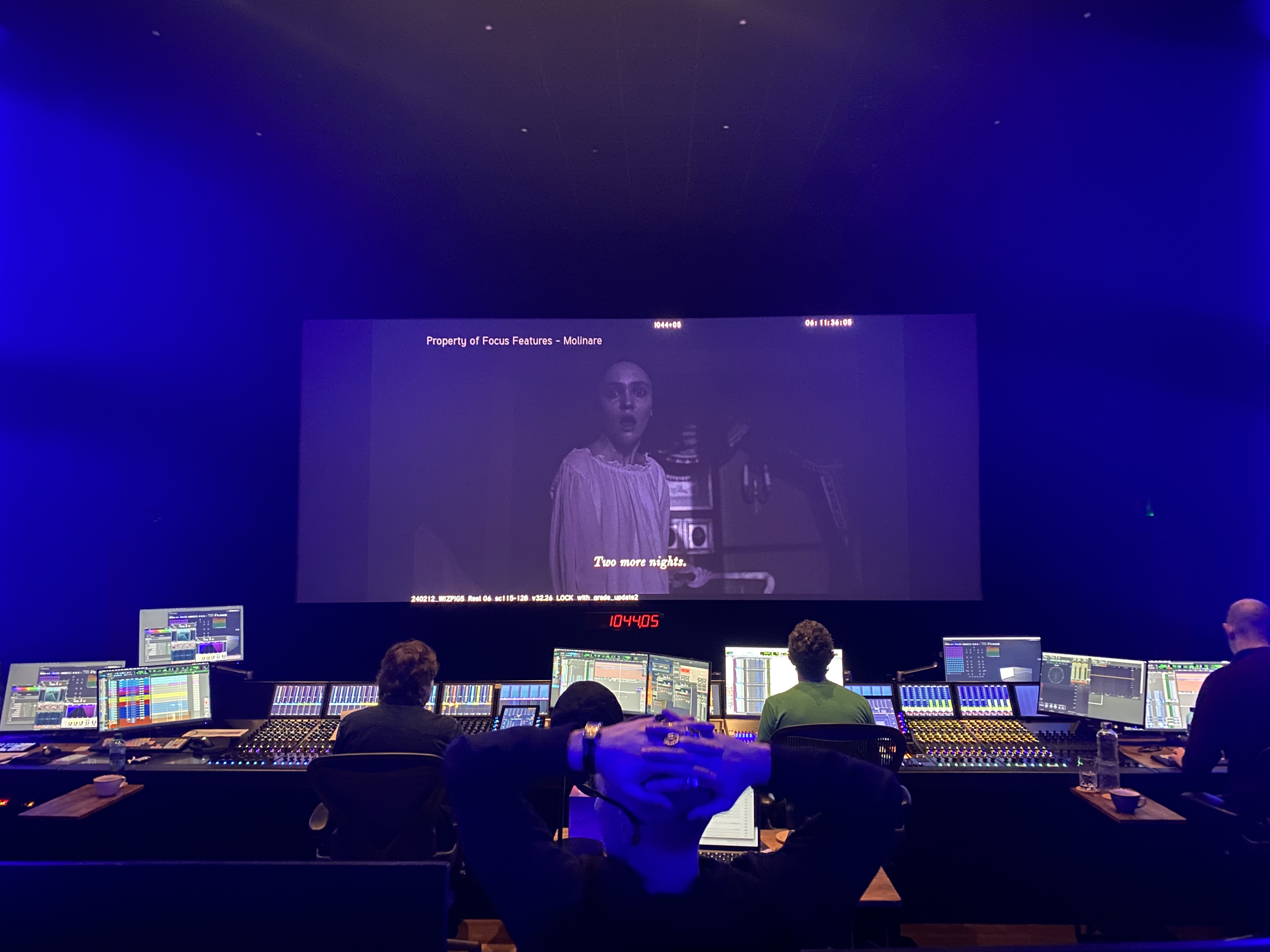
Louise on the mix stage.
I went to some of the score recording session. The producers there worked on everything from Coldplay and huge, big, movie scores. The recording room is a converted chapel because of the acoustics. You have this orchestra of strings, drums - it’s a mini orchestra. The end score is obviously very emotional. It’s tragic, it’s compelling, and by the end of the recording, the studio producer said, “Wow, that’s the best bit of music I’ve ever heard that we recorded in our studios!” The studio is in Belsize Park.
You alluded to this shot earlier as Nick Hoult cuts himself. When he does that, you cut to this big close up. Can you talk about your personal philosophy about using shot size and editing, especially close-ups?
Does the scene call for it? Does the moment? Does that moment call for it? Do I feel like I need it? That close-up obviously is to draw attention. It’s showing information also. It’s jarring to suddenly go to a close-up. It’s not a jumpscare, but it’s sort of saying to the audience, “This is important. This is a turning point. Something’s happened.” Then you go to the Orlon’s eyes: “Let me heal thy wound.” Oh my God, what a line!
It’s the grammar of cinema, right? It’s what the audience is used to: “Now I understand what’s important, what’s not.”
That’s true. Yeah, absolutely. But if you’re talking about at what point do you go from a medium shot to a close-up in a conversation on a face that’s definitely just emotional. When a character is getting to an emotional high point or low point - anything that is obviously emotionally intense. As soon as you get to that intensity, you need to be in close-up.
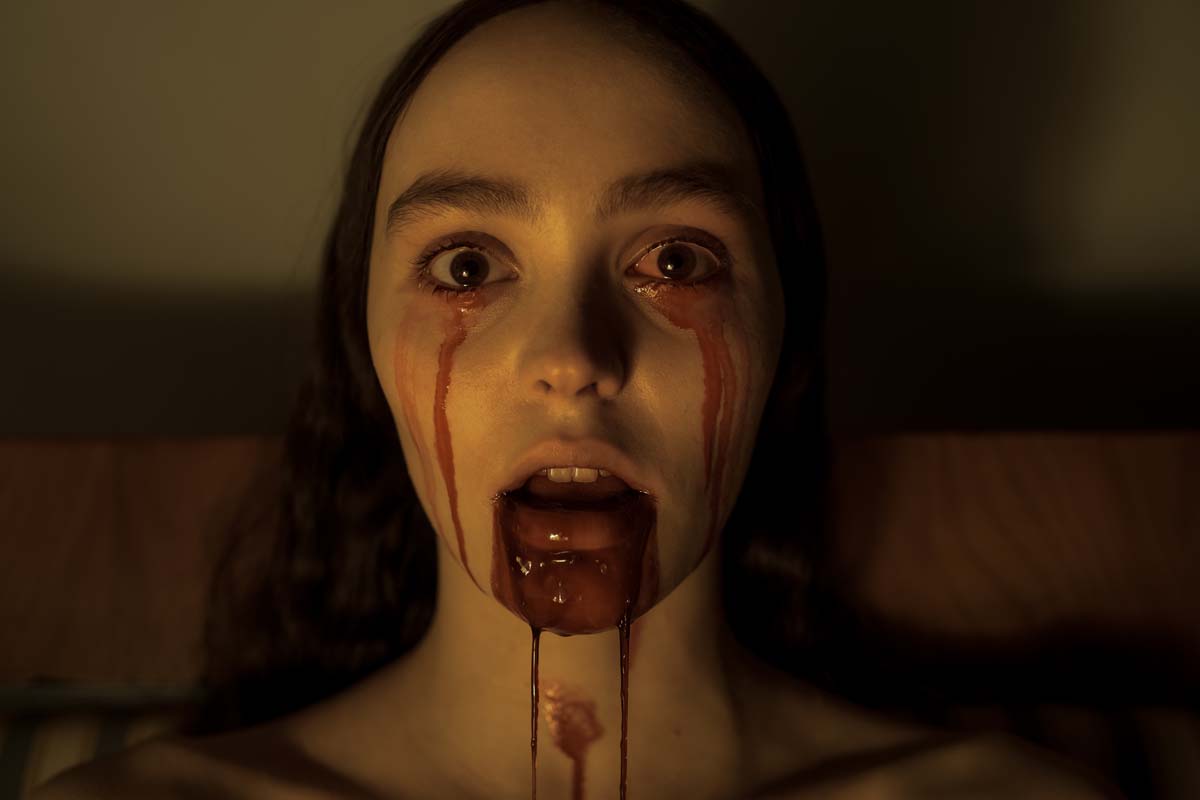
I feel like there are long stretches without dialogue. I find that when I have dialogue, the performance helps a lot with pacing, but without dialogue, you’re much more on your own. Can you talk about the pacing of the stuff without dialogue?
There’s a couple of moments in the film where we we get into a montage situation, and it’s music that carries you through, like when Ellen is sleepwalking, intercut with Nick being attacked again in the bed and sort of levitating with Orlok, then he has a flash of Ellen, completely naked with blood dripping out of her mouth. For that montage, I cut the visuals first, then Robin composes the music to fit, and that we’ve sort of go back and forth a little bit. There’s a bit of revising the edit until we get it right.
What about the sequence as Thomas Hutter’s traveling to the castle?
You see him say goodbye to Lily and Friedrich and Anna Harding. He rides off on the horse through the cobblestones, out into the countryside and over the mountains, and you see him cross a rickety bridge by a sort of a Pagan/Christian shrine. With the first pass, I want to keep everything long, so I’ll stay in them as long as I can - start off really long. I’ll put that sequence together, then when I get the village sequence, then as you watch when you’ve put it together, you say, “Oh yeah, we’re too long. We don’t need to see the horse actually exit frame, we can just cut there. We don’t need to see him come into the frame even, or a lot of times I like to start on an empty frame and have a beat before the character walks in. I can see the design in the shot.

The shot where he is walking with the horse and he comes up onto this sort of mountain pass and the bridge. The camera sort of pans to the right. He’s out of the shot and then it lands on the bridge, and he walks back into the shot and starts walking and starts walking across the bridge. The camera then carries on, panning to the right. That shot was actually probably the trickiest edit of the whole film, because what happened was the camera panned right past the shrine, but I wanted it to push in on the shrine. It would have been an easier cut to the next shot, which started with a pan from left to right, starting off in the dark of the trees, panning into the pathway with Hunter walking into it, then he stands at the crossroads in the night with this beautiful snow, that beautiful shot. And because the mountain pass where he walks across the bridge with the shrine was daylight, and the next shot was nighttime and very dark… Oh, God. I futzed over that like nobody’s business. Trim Tool a go-go on that one. I just couldn’t feel it. And I’m doing it dry without music. The music does obviously help with those kind of edits.
In every single film - I’m sure you’re the same with every single film you’ve cut - there’s still edits that you cringe at every time you see it, like you’ve been hit with an arrow. “Argh! It still doesn’t work!” But hopefully it’s only you feeling that is feeling that.
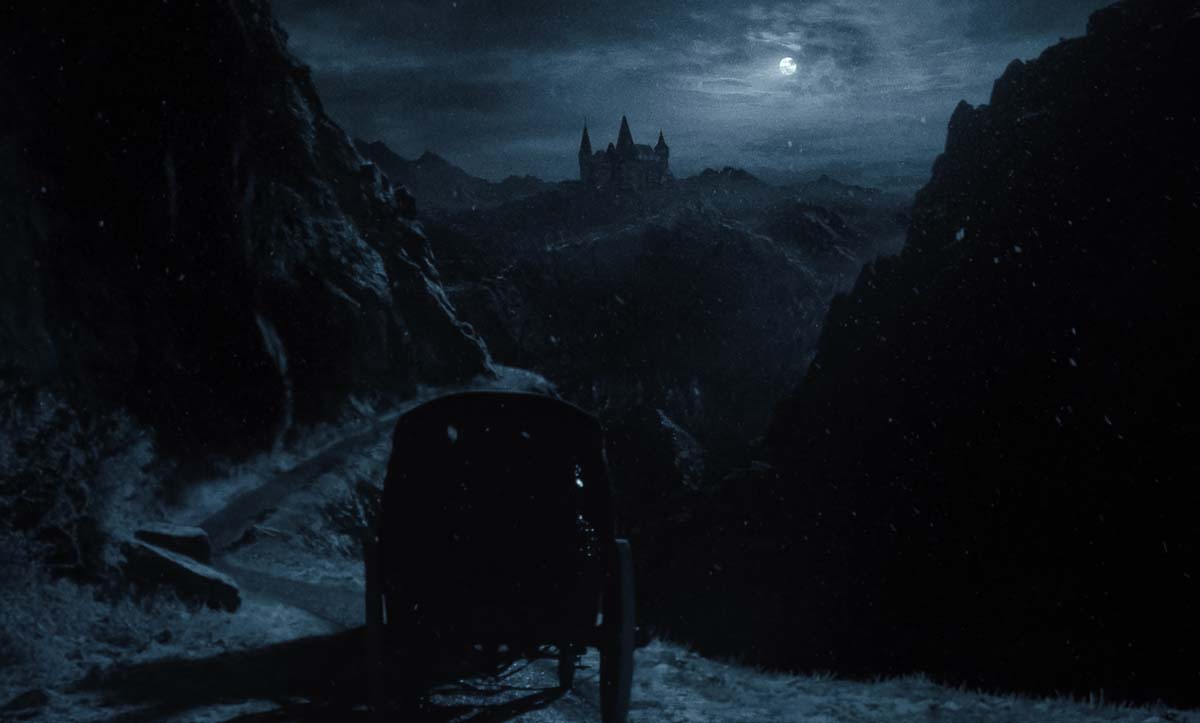
It’s only you, because I never noticed any bump and I remember that sequence that you’re talking about.
Louise, “Trim Tool a go-go” might be the quote for the day.
That’s going to be my book title.
Well, let me know when you’re going to write that book. Louise, it was such a pleasure talking to you today. Thanks for chatting about this movie with us.
It’s a pleasure, and thank you for asking me to chat about it. It’s always fun.








